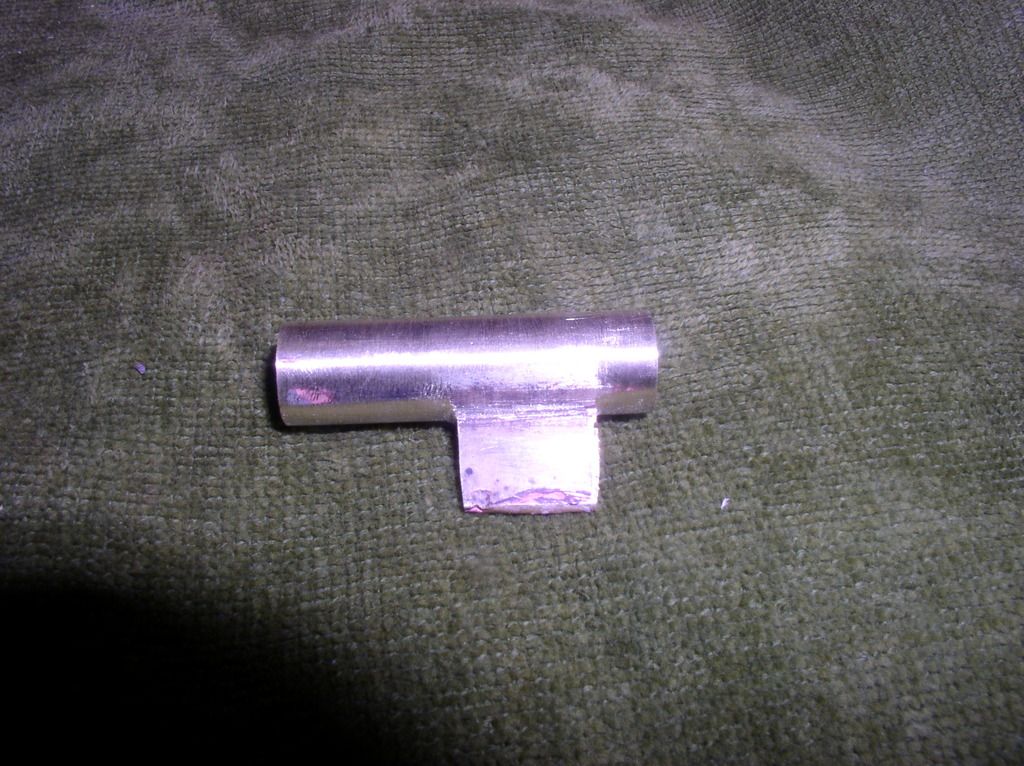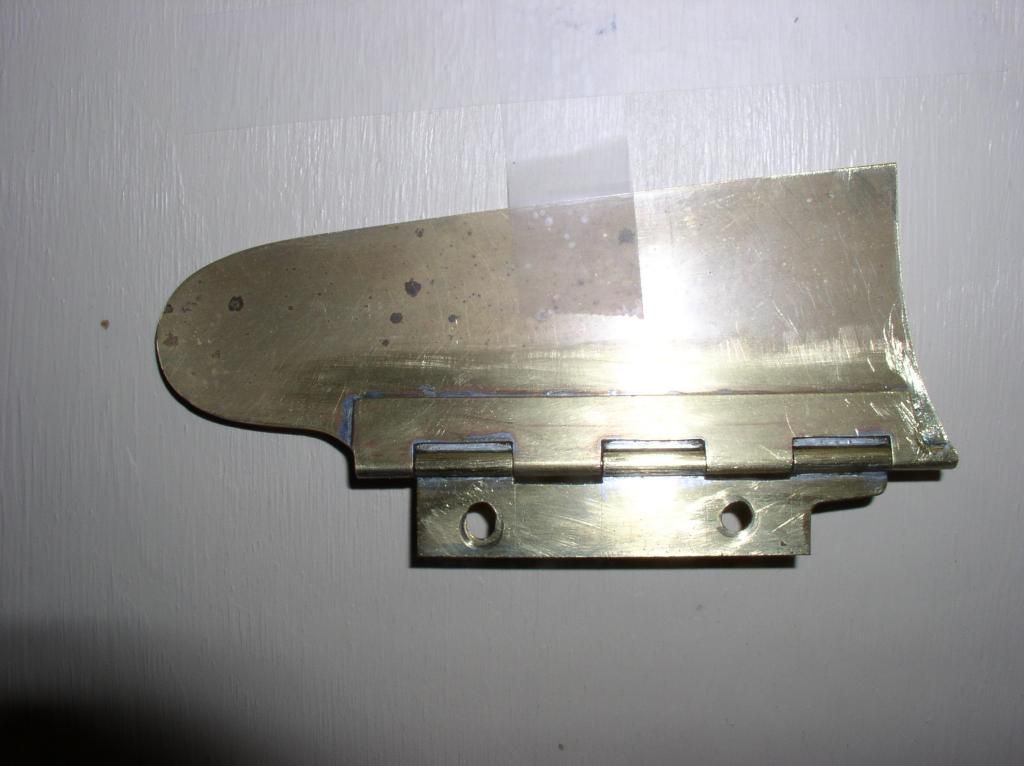Col. Batguano
75 Cal.
- Joined
- Feb 10, 2011
- Messages
- 5,038
- Reaction score
- 1,416
After hours of shaping, my nose cap is ready for an end cap now. But, try as I might last night, I couldn't get the solder to stick to the brass. I tied the silver/tin mix, and the tin/lead mix that comes in soft "roll" form at Home Depot, and for flux the standard goobery stuff that comes in a tin. The same way as I join pipes in plumbing, or solder wires together (though I use a soldering gun for that). All it did was burn off and catch fire. The solder just balled up and did not bond to the brass. I was using a Mapp gas torch for heat.
Then, as I kept it up, the flat plate I was trying to solder the shaped plate distorted and then a big fat hole got burned through it. Big mistake. I cut another flat piece of brass, and then tried the ox-acetylene torch, and a fluxed brass brazing rod. That didn't work either. It just burned through the base plate (.032" brass) even faster.
Thank goodness it wasn't the shaped piece that took about 5 hours to shape and trim to size.
Am I doing something wrong, or using the wrong solder and flux? Where can I get the right stuff if it's wrong? I have a base to solder on to a domed patch box later on, so I REALLY don't want to wreck that.
Then, as I kept it up, the flat plate I was trying to solder the shaped plate distorted and then a big fat hole got burned through it. Big mistake. I cut another flat piece of brass, and then tried the ox-acetylene torch, and a fluxed brass brazing rod. That didn't work either. It just burned through the base plate (.032" brass) even faster.
Thank goodness it wasn't the shaped piece that took about 5 hours to shape and trim to size.
Am I doing something wrong, or using the wrong solder and flux? Where can I get the right stuff if it's wrong? I have a base to solder on to a domed patch box later on, so I REALLY don't want to wreck that.











